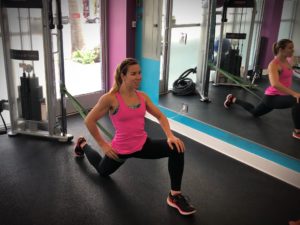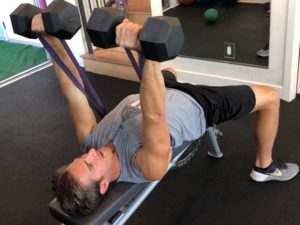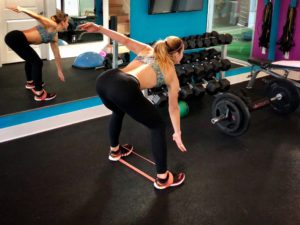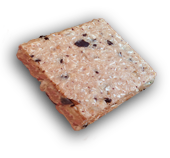Since Tom Brady released his book The TB12 Method, I’m frequently asked if as an Exercise Physiologist, I know more about “what is pliability?” and “why does Brady train with bands?” Today I’m going to discuss bands, why to use them, how they work, kinds of bands and what they do for your training.
 Why Bands?
Why Bands?
I really like using resistance bands because of the varying speeds of contractions they allow. As an athlete, very little I do is done at a slow + steady pace, much of it is fast + explosive. Now, I know the traditional weightlifting peeps are going to say that’s what Olympic Lifts are for! And YES, I love Olympic Lifts for developing explosive power, they definitely helped me improve my vertical jump. But I cant do them every day because they place a lot of strain on the body.
With bands, I can develop strength while working at high speed during the concentric contraction, and slowly on the eccentric contraction. By working the concentric phase fast, I can simulate actions that are similar to a volleyball spike or a tennis serve which will improve my power on both. I can also work slowly on the eccentric phase which places the muscle I’m targeting under tension for a longer period of time, allowing for greater strength gains.
I also love the fact that I can change the plane of motion I’m working easily + fluidly. Essentially, bands allow us to move in a more natural + functional way. Another benefit is that they permit us to work many of the smaller stabilizer muscles that are hard to hit with traditional weights. This makes bands a useful warm up tools, especially prior to traditional strength sessions. For example, several sets of banded side-walks and directional lunges are perfect prehab before squats and deadlifts, because they activate the glute medius, prepping these muscles (that many lifters unknowingly do not use during these lifts), to do their job alongside prime movers.
 Bands Versus Weights.
Bands Versus Weights.
There is no doubt that traditional weightlifting, when done correctly, will develop denser, thicker muscles, which in turn will provide improved strength and power to the body. The downside to working solely with traditional weights it that you will have to endure a significant amount of muscle soreness to continue development. You’re working at the same speed but increasing workload by increasing either weight lifted or repetitions performed. Basically, you’re constantly putting the body under greater and greater stress. If you continue to follow this model without proper rehabilitation such as stretching and rolling (soft tissue work), you will get tighter and tighter and eventually get hurt.
On the other hand, bands work the muscles differently.
- There isn’t a crazy load involved.
- Muscles can work at varying speeds as there is not gravitational lag.
- They allow for greater range of motion.
- Bands generally don’t cause as much internal trauma to muscle fibers.
- Bands also will allow you to place muscles under greater stress at top third of the ROM. This is usually the area where we’re strongest; thus permitting us to develop additional strength in the lower two thirds of the ROM while still challenging the top third.
 Types of Bands.
Types of Bands.
There are 3 basic types of bands that can be used for training:
Sheathed Bands – these bands typically have handles on them + have to be anchored. They are predominantly used to condition + train the upper body muscle groups. They also usually in varying degrees of elastic resistance. TB12 Sheathed Bands
Looped Resistance Bands – these bands come in varying thickness which in turn dictates how much resistance or assistance they offer. They can be used in a multitude of ways from adding extra elastic resistance to a squat or deadlift, assistance on pull-ups or even for prehab/rehab type exercises. TB12 Looped Bands
Short Bands – these small bands are looped around the ankles or knees to add resistance during prehab, stabilization + agility exercises. Short Bands






